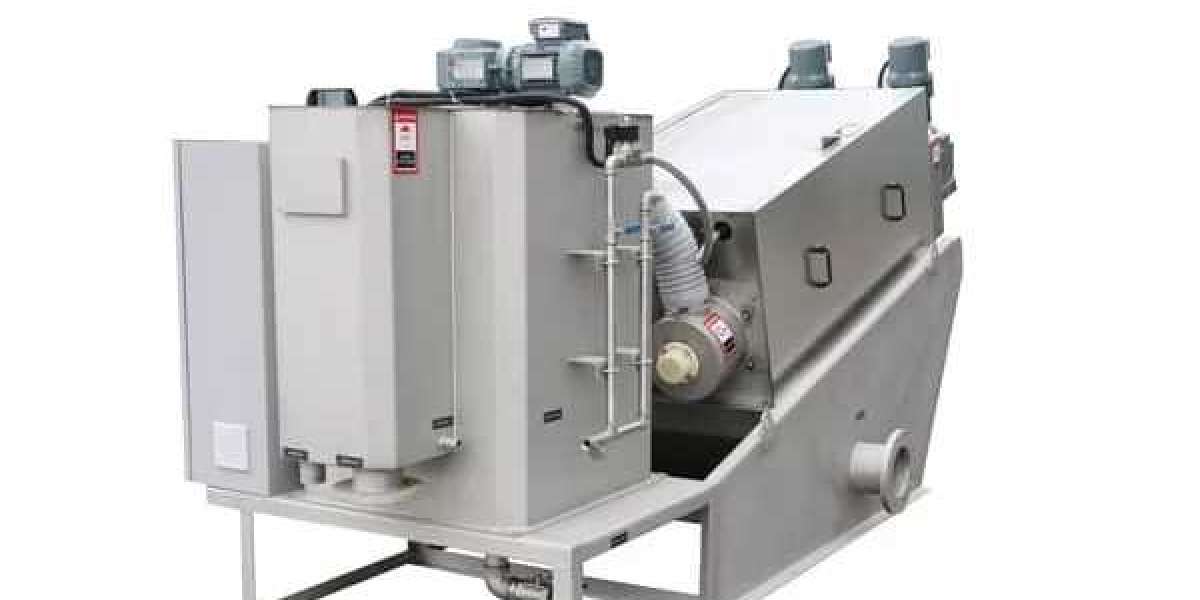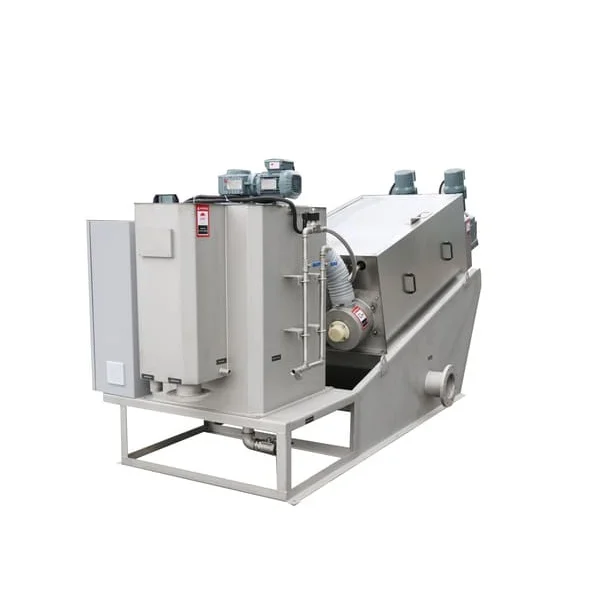Sludge is an inevitable product of sewage treatment plants and sewage treatment. When sludge without proper treatment and disposal enters the environment, it directly brings secondary pollution to water bodies and the atmosphere, which not only reduces the effective treatment capacity of the sewage treatment system, but also poses a serious threat to the ecological environment and human activities.
Along with the process of treating sewage in wastewater treatment plants, a large amount of sludge is produced. The amount of sludge is about 0.3% to 0.5% of the treated water volume (water content of about 97%). Of the total construction cost of a wastewater treatment plant, about 20% to 50%, or even 70%, is spent on sludge treatment. Therefore, sludge treatment is an important part of the wastewater treatment system and must be given full attention. Sludge contains a large amount of harmful and toxic substances such as parasite eggs and heavy metals; useful substances such as plant nutrients, organic matter and water. The purpose of sludge treatment is to reduce, stabilize, render harmless, and utilize the sludge in an integrated manner. The unit processes usually used are: thickening, stabilization, sludge conditioning, and dewatering.
After thickening and digestion, the sludge still has about 95% to 97% water content and is still large in volume. For comprehensive use and final disposal, dewatering of the sludge is required. The role of dewatering is to remove the water present between and within the sludge particles, thus changing the physical properties of the liquid sludge into a semi-solid state. The ideal dewatering should be to remove the maximum amount of water, while all the solid particles of the sludge should be retained in the dewatered mud cake, and requires the lowest investment for this operation.
Sludge treatment in China's urban wastewater treatment plants started late, less than 1/4 of the existing sewage treatment facilities in the country have sludge stabilization facilities, and less than 1/10 of the treatment process and supporting equipment are more complete.
For a long time, there is a tendency to focus on sewage treatment and light sludge treatment in China. At present, China's sludge treatment process has a single technology, backward equipment level, low disposal guarantee rate, the risk of secondary pollution and other problems. In addition, the existing sludge treatment process also has the shortage of high cost and long time.
According to statistics, the current national urban sewage treatment plants produce about 1.8 million tons of dry sludge each year (equivalent to 80% of water sludge 9 million tons), and the annual rate of 20% increase, so the sludge disposal problem is becoming more and more prominent. In China's existing wastewater treatment facilities, sludge stabilization facilities are less than 25%, and less than 10% of the treatment process and supporting facilities are perfect. The few existing sludge digesters that can operate normally are very few, and some are not operating at all. Traditional methods of sludge treatment and disposal, such as landfilling, incineration, drying and composting, have been of great concern to the environmental authorities because of the potential for pollution. The sludge problem has become an increasingly serious pollution of the environment and a major environmental hazard to society.
The water content of organic sludge has a great influence on its volume, and the amount of water content is closely related to the state and mobility of organic sludge: when the water content of sludge is 85%, it can be transported by pump; when the water content of sludge is 70%-75%, the sludge is soft and not easy to flow; when the water content of sludge is 60%-65%, it almost becomes solid, and when it drops to 35%-40%, the sludge is agglomerated and the volume becomes 1/3 of the original volume. When the water content of sludge is 60%-65%, the sludge becomes almost solid, and when it drops to 35%-40%, the sludge becomes aggregated, and the volume becomes 1/16-1/10 of the original one.
Municipal sewage sludge is mainly composed of organic matter, containing four-fifths of water and one-fifth of suspended organic matter; it contains beneficial elements of nitrogen, phosphorus, potassium and a large amount of available organic matter, but also contains a large number of pathogenic bacteria, microorganisms and parasitic eggs, and heavy metals such as chromium, cadmium, lead, arsenic and mercury, which are harmful to human health. Due to the complex composition and viscous state of sludge: fine particles, poor permeability, low density, large volume, colloidal properties, and easy decay and odor, it is very difficult to transport, treat, and utilize. So far, there is no mature technology to effectively treat and fully utilize activated sludge.
In view of this, there is a need to provide a fundamental solution to the problem of excess sludge, and a stable and effective process must be used to reduce and treat the sludge in a harmless manner.
In order to separate the liquid and solid phases of sludge, it is necessary to overcome the binding forces between them, so the main problem encountered in sludge dewatering is the energy problem. Different Screw Sludge Dewatering Machines can be achieved by purposefully using different external measures for different forms of binding forces.
Sludge dewatering and drying includes natural dewatering, mechanical dewatering and thermal treatment drying. After the sludge is concentrated and digested, there is still 95%~97% water content, and it is easy to rot and smell, so it needs to be dried and dewatered.
There are two common dewatering methods, natural drying and mechanical dewatering. However, Kintep's Screw Sludge Dewatering Machine not only dewaters sludge efficiently, avoiding mold and odor, but also saves energy and protects the environment.
Related Recommendations
Screw Sludge Dewatering Machine
Low Temperature Sludge Dryer System
The proportion of printing and dyeing wastewater in industrial wastewater










